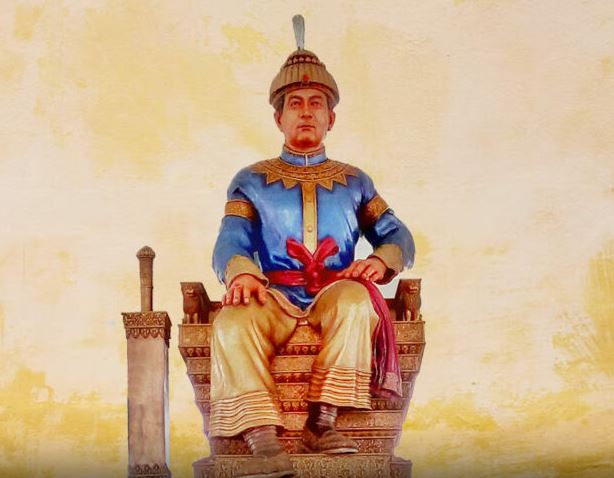Asom Divas or Assam Day is celebrated on December 2 every year to commemorate the arrival of the first king of Ahom kingdom Sukhapaa in Assam.
The day of December 2 is also commemorated as Sukaphaa Divas in honour of the founder of the Ahom kingdom that existed for nearly 600 years.
He was and is still revered as God’s chosen messenger. According to folklore, Sukaphaa was a descendant of God Khulung, who descended to Earth and established his throne in the Mong-Ri-Mong-Ram region.
Asom Divas, also known as Sukapha Divas, is a provincial holiday in Assam.
The period of Ahom rule is always credited as the golden period in the history of Assam as these rulers kept the Mughals away from conquering this land.
According to legend, Sukaphaa was born in Mong Mao, a place close to Ruili in Yunnan, China.
Due to the heroic and courageous leadership of Chaolung Sukapha, his birthday became known as the foundation date of the Ahom Kingdom, and soon afterward, Sukaphaa came to be worshipped as a god. Sir Edward Gait’s book “A History of Assam” says that Sukapha left the city of Maulung in 1215 AD with eight nobles and a small group of people. Maulung is now in Myanmar, but it used to be in Burma. In 1235 AD, he and his clan settled in Charaideo, in upper Assam, after having traveled to the Brahmaputra valley. Sukapha started with a small principality in Charaideo.
This was the beginning of the growth of the Ahom monarchy, which would eventually become the most glorious part of Assam’s history. Chalong Sukapha governed throughout the 13th century and established the Ahom dynasty, which dominated Assam for nearly 600 years. Until the Treaty of Yandaboo was signed in 1826, the Ahoms held dominion over the province.
Asom Divas Origin and History
The origin of Assam’s Asom Divas celebrations may be traced back through time. A prince from the Tai State of Mong Mao named Chaolung Sukhapha started the Ahom Dynasty in the city of Ruili in what is now the Chinese province of Yunnan.
Legend claims that Prince Sukhapha’s cousin was causing a lot of trouble because he refused to allow Sukhapha to inherit the kingdom. The prince fled to the Patkai Mountains in Assam to avoid the fallout from the family feud.
They established a brand new state by removing the political orders of the Bhuyans. The use of involuntary labor was essential to the Ahom state’s economy. The “Paik” label was given to those who were pressured into working for the government. The Ahom lived in clans known as khels. Even though they believed in their own tribal gods and traditions, they were open to Hinduism and the Assamese language. The majority of Sukapha’s people were male, and they intermarried with women from other Assamese communities. Assimilation rates grew due to intermarriage as well.
The Ahom people had a highly developed society. Land grants were awarded to poets and intellectuals, and the performing arts were supported. Notable works originally written in Sanskrit have been translated into the language of the region. Buranjis, which are historical texts, were also written, first in the Ahom language and then in Assamese.
The Ahom community mostly settled in the northern districts of Assam such as Sibsagar, Golaghat, Jorhat, Dibrugarh, Tinsukia, Lakhimpur, Sonitpur, and Dhemaji. Additionally, they also reside in some parts of Arunachal Pradesh, Karbi Anglong, and Lohit districts.
Contribution of Chalung Sukapha to Assamese society
Sukapha was able to integrate numerous ethnic groups. He became close with many different Assamese groups, but mainly the Sutiyaas, Morans, and Kacharis. Most people think of him as the person who made Bor Asom, also called Greater Assam, a stable and culturally diverse state at the crossroads of South Asia and Southeast Asia. Assam celebrates “Asom Divas” every year on December 2 in honor of Sukapha and his rule.
Asom Divas is celebrated in a grand manner across various institutions of Assam by singing and narrating praises of Sukaphaa along with the performance of various traditional forms of dances and songs.
Also Read: New channel numbers of News Live and other Pride East channels on Tata Play – News Live





